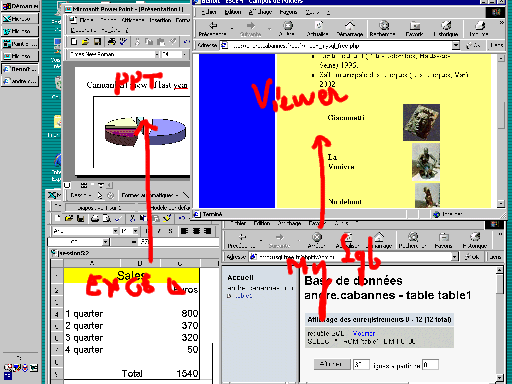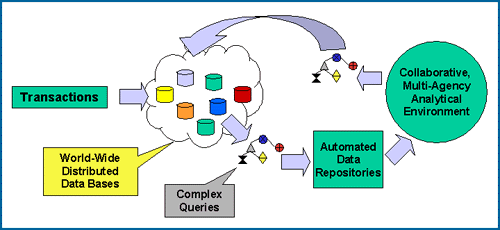NTIC
Lesson 6: information systems
Reference : PPT presentation
Lecture outline :
The use of information is changing our world very fast : Google was created 4 years ago by two Stanford Ph.D. students. It now holds 55% of the world search engines queries.
Is Google becoming too powerful ?
- half a dozen fellows control more than 50% of the on-line distribution of information to the planet
- cf. suit Google vs Search King
- a presentation of all the tools to search information on the Net is becoming obsolete
Information systems appeared in the 60's with the generalized use of computers in the business world.
They first transformed the Accounting function. A transaction description (the input) is entered manually into a journal. Every subsequent step is performed by softwares : posting, ledgers, year-end documents, reports. The result (the output) becomes an input in the decision process of managers, bankers, investors.
From Accounting I.S. went into the Sales & Marketing functions. When you purchase goods at the check-out counter of a supermarket, your products bar codes are read with a laser pencil and the information gathered goes into an Information System that feed the accounting books, the inventory records, and the re-ordering process.
I.S. entered manufacturing in the 70's, with the JIT supply organization. In 1970, in a car assembly plant, you would see a long assembly line, with hundreds of job positions, each job position backed by a large bin full of parts to be mounted on the car-in-progress passing by. And all the cars were alike.
Now, on the same assembly line you don't see the part bins anymore and different car models follow one another, thanks to powerful Information Systems treating information to and from suppliers (SCM), and from car dealerships (CRM back-office functions feeding production lines I.S.).
In the eighties and nineties, information systems pervaded all the other functions of the firm (from botton up). Now it is unusual to see a desk without a computer screen on it, even in top-executive offices.
What is the PC for (aside from local information treatment) ? Ans. : To display relevant information to the person in front of its screen (in order to help in his/her task), and to receive information from that person (that will either feed an information system, or a loose data repository - web, forum, anything -, or will go directly to one recipient - either publicly or privately).
KM, and Computer Aided Decision Making.
Architecture : databases, UML, what is the objective ; information systems, same questions.
A visit to Dell computer web site. Ordering a customized computer on line. It will be delivered within a few days. This gave a strategic advantage to Dell. It now is N°1 in the micro-computer industry (back from N°2 after the HP/Compaq merger).
Information systems produce information used in the strategic decision taking process : change a technology ? (ex. rotating vs reciprocal engines in cars, or in fridges ; one succeeded the other one not) ; change the design of a product ? (ex. traditional watches, to swatches, to radio controlled clocks).
 (click on the "stop" button of your browser to stop the wriggling)
(click on the "stop" button of your browser to stop the wriggling)
Radio controlled clocks illustrate the dissociation of information production from its display : the information comes from a broadcasting station to update the time once in a while on the clock. In fact the clock mechanism is becoming useless, it could be made without. (Why radio controlled clocks are often given a traditional look ? See above.)
(Understanding the presence of two or several functions that can be dissociated, or put together, in a product is an important engineering thought : example tubeless tyres ; or, on the contrary, hot air balloons with an inner flimsy airtight enveloppe and an outer strong mesh.)
Information systems dissociate information input, information treatment, information output (or display), and information usage (usually for decision making).
The example of dynamic links between a PPT presentation (the display) and an Excel document (the data repository and treatment software).

Databases and front-end softwares do the same.
HTML mixes up data information and display information. XML is to be preferred.
Internet is a large repository of information. Newsgroups are sort of a huge FAQ. Don't leave careless messages on forums. Profiling softwares will determine your personality from your Internet "foot prints".
Internet is the child of two contrasting cultures : the military and the libertarian. The business culture entered Internet. There is a fight going on between the business and the libertarian cultures (Gates vs Stallman).
Ask google : how to install linux on your computer (without quotes).
An example of world-wide information system : The Genisys Darpa program
